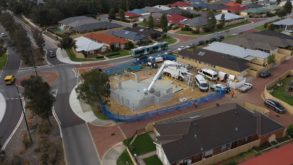
The industry’s robotics players are on a tear. Moves by Perth, Australia based autonomous bricklayer robotics company FBR, Inc, including faster bricklaying speeds, global expansion of its “walls as a service” model with Mexico based Developer, GP Vivienda, and movement beyond residential into commercial construction are the latest evidence. With news about 3D printer ICON’s $35 million raise, and crunchbase news reporting $600 million in venture funds pouring into no fewer than 45 3D printing start ups, it is easy to forget about a close cousin of 3D printing in construction – the robotic bricklayers. 3D Printing in Construction is a hot topic again, but FBR, with a recent $16 million round, demonstrates that so is other robotic construction, beyond 3D printing.
3D Printers, Exoskeletons, and Robots. A New Era for Construction Equipment
On this Wednesday’s Machines Analyst Call, we will go deeper into the topic, meeting with 3D printing company ExtreeE
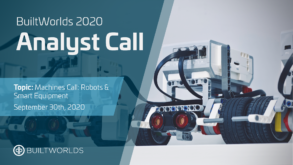
Co-Founder, Jean-David Kuhn to explore in more depth, the progress being made in the field of 3D printing. We will also meet with Hilti‘s Eric Hollister to talk about how exoskeletons are helping increase safety and productivity on the job sites. There is no doubt that advanced machinery is now reaching the commercial market in much more robust ways the industry has not seen, previously.
Among the Industry’s First Robotics, Bricklayers and FBR, are Now Also Among the Most Mature
While the industry has recently seen a flood of robotics companies make their way to market (20 Construction Robotics Companies), Perth, Australian-based FBR, founded way back in 1999, stands out as a pioneer. In fact, two robotic bricklaying companies, FBR and Construction Robotics both were among the first robotic companies to capture the industry’s attention. FBR came to market with its Hadrian X, laying a brick wall, autonomously from a 3D CAD file several years ago. As with other 3D printing companies working in concrete, polymers, steel, and other materials as well as in shop prefabrication, the concept of machines that can build structures autonomously guided by digital plans, has become a fundamental milestone goal on the industry’s road to greater productivity.
Technical and Commercial Progress Are Now Evident in the Sector.
According to Steve Pierz, FBR’s Chief Innovation Officer, FBR has moved from 85 blocks an hour a year ago to 200-250 blocks an hour now, and the company continues to make gains. As with other autonomous machinery, FBR’s Hadrian doesn’t get tired. It can work day and night, on weekends, and in inclement weather. Further, bricklaying is very demanding on craft workers and poses other potential safety risks to workers as well. Moving people out of dirty, dangerous, and physically demanding field work and into rolls such as programming, operating, and maintaining advanced equipment represents potential progress for the industry beyond productivity gains.
With “Walls as a Service,” FBR Expands From Residential to Commercial and Grows Internationally
Recently, FBR completed its first commercial building and unveiled its wall as a service delivery model. These two developments are significant for a number of reasons. By not selling or renting the actual equipment, FBR makes it easier for contractors to leverage their solution on their projects. Further, by expanding from residential to commercial work, FBR significantly increases its access, not only to large residential builders and developers, but also to larger and more sophisticated commercial builders and developers.
Beyond Australia, where FBR has now completed it Pilot Program Agreement with Archistruct Builders & Designers, FBR has expanded to Saudi Arabia/UAE and also recently formed a partnership with Monterrey-based, GP Vivienda for work in Mexico. A 50 year-old developer and construction company, GP Vivienda has more than 70,000 homes under its belt and should be a strong partner for FBR, as FBR looks to grow in North America. With more scale, FBR expects to continue to refine its machines and business model and form other partnerships to deploy its machines around the world.
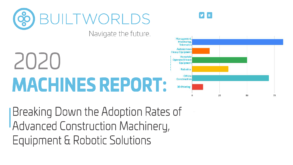
With developments like these from FBR, it is easy to see how fast the construction robotics space is moving compared to just a few years ago when we wrote this piece on 8 companies bringing robotics and automation to construction. In the presentation below Steve Pierz of FBR talks about construction robotics today along with Max Trommer, Founder and CEO of Rebartek, another area of promising robotics development. Stories like theirs offer assurance that broad adoption of construction robotics is much closer to reality today.
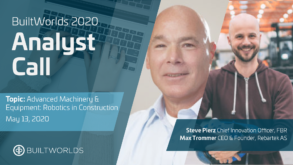
For more information about how to access this case study recording, other case studies and resources, online conferences and calls, and the full suite of the BuiltWorlds network’s learning and connecting tools, visit Join the BuiltWorlds Member Network to find out more.

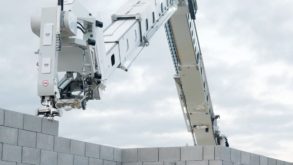
Discussion
Be the first to leave a comment.
You must be a member of the BuiltWorlds community to join the discussion.